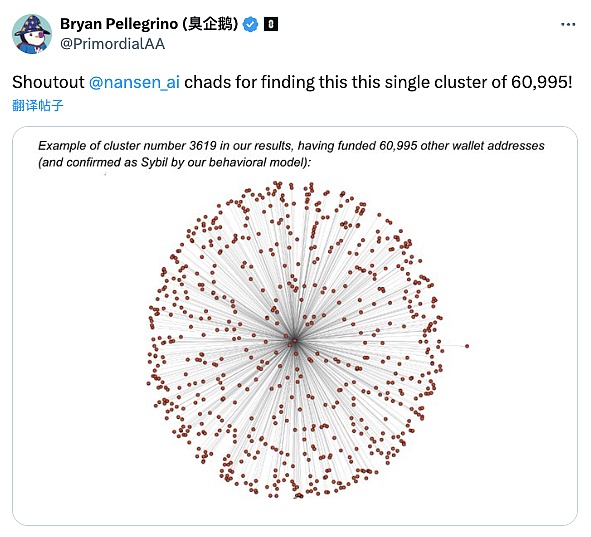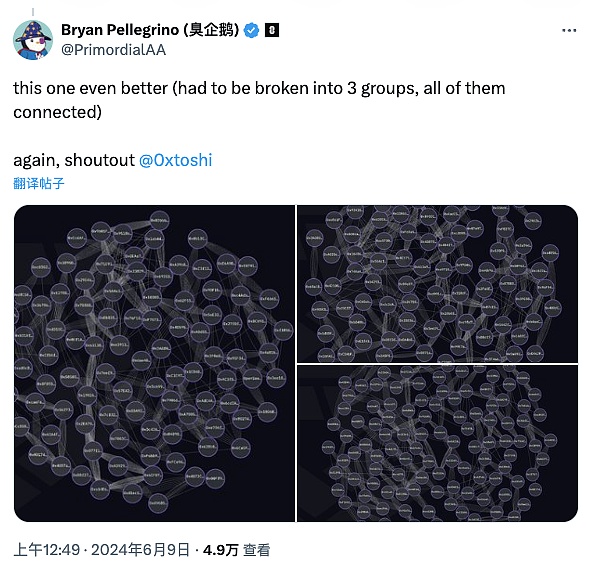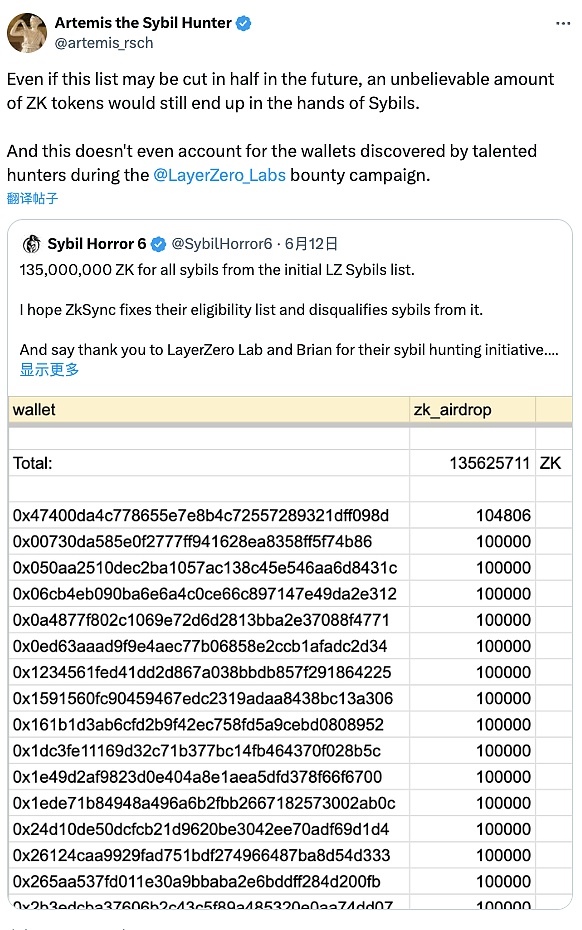The rapid development of blockchain technology is reshaping our lives and business models. As a promotion and incentive mechanism in the blockchain ecosystem, Airdrop has received great attention in recent years. However, airdrops often come with various challenges and risks, the most notable of which is Sybil Attack. This article will explore the significance and current situation of airdrops, analyze cases such as LayerZero and ZKSync, understand how they deal with challenges, and explore the development direction of airdrop mechanisms in the future.
Why does the project side conduct airdrops?
Blockchain project parties choose to conduct airdrops for multiple purposes. These reasons establish the core position of airdrops in the blockchain ecosystem:
Increase visibility and user engagement: Through airdrops, projects can quickly attract a large number of users, expand the scale of the community and enhance the market influence of the project.
Dispersed token holdings:Through airdrops, projects can disperse tokens to more In the hands of multiple users, tokens are prevented from being too concentrated in the hands of a few large households, thereby improving the decentralization of the project.
Testing networks and applications: Through airdrops, projects can encourage users to test and discover and fix potential problems to improve product quality and user experience.
Incentivize early supporters:Through airdrops, project parties can reward early supporters and increase user confidence. Loyalty and engagement.
Challenges faced by airdrops
With the airdrop mechanism With the popularity of , project parties are also facing more and more challenges and potential risks:
Sybil Attack: Attackers abuse airdrop rewards by creating a large number of false identities, causing the rewards originally intended to be distributed to real users to be divided up by a large number of fake accounts.
Bot brushing votes: Automated tools and scripts (bots) may be used to brush votes and obtain airdrops, thus Undermining fairness.
Abuse of supervision mechanism:Malicious users may exploit vulnerabilities in airdrops to attack or manipulate, damaging the project healthy development.
LayerZero's Witch Cleanup Operation
In response to airdrops In terms of challenges, LayerZero’s witch sweeps became a high-profile case. They have taken a series of measures to combat Sybil attacks and protect the fairness of airdrops.
On May 4, 2024, LayerZero Labs launched the "Self-Report Sybil Activity" program. If the Witch address self-reports the relevant address on the designated page, it will receive 15% of the expected allocation without answering any questions, the deadline is May 17th at 19:59:59.
After the self-reporting period ends, the cleanup operation will be divided into two phases. Phase 1, the official will release a list of all identified Witch users, among which those users who are identified but have not self-reported will not be able to receive airdrop distribution; Phase 2, the official will Bounties are open and users can submit detailed reports of witch activity. Successful reports will result in Witch users being denied airdrop allocations and bounty hunters will receive 10% of the expected allocation amount for Witch addresses.
Through these measures, LayerZero successfully marked and screened a large number of potential witch addresses, improving the fairness of the airdrop.
Until June 4, 2024, Bryan Pellegrino tweeted that the Witch Report was being reviewed and users could submit objections. Although being included on the reporting list increases the risk that the address in question will be considered a witch, it does not mean that the address will definitely be judged as a witch. The final list of witches is not out yet, and current reports may be false positives and will be screened at the end. The final list of witch addresses will be announced before the end of June.
Subsequently on June 8, 2024, Bryan Pellegrino tweeted again that Nansen had confirmed 60,995 addresses as witch address clusters :

And some other screenshots of Studio Witch's address:

The high-profile ZKSync airdrop plan
Following LayerZero, ZKSync is a Layer 2 solution based on zero-knowledge proof (ZK-Rollup) expansion technology , has also attracted a lot of attention recently, especially its just-launched airdrop plan. The ZKSync Association will conduct a one-time airdrop of 3.6 billion ZK tokens to early users and adopters next week, with 695,232 eligible wallets. The snapshot is March 24, 2024, and community members can check airdrop eligibility at https://claim.zknation.io/ and claim airdrops starting next week until January 3, 2025.
This airdrop accounts for 17.5% of the total supply of ZK tokens. Users will be able to claim their tokens starting on June 24, 2024, with the claiming period lasting until the end of January 3, 2025.
Users eligible for ZKSync airdrop
The qualifications and standards for ZKSync airdrop distribution are very strict , to ensure that only real users and contributors are rewarded:
Users (89 %): Active ZKSync users who have transacted on ZKSync and reached the activity threshold.
Contributors (11%): Contribute to the ZKSync ecosystem and protocol through development, advocacy, or education Contributing individuals, developers, researchers, communities and companies.
Eligibility is based on snapshot of ZKSync Era and ZKSync Lite activity on March 24, 2024 at 00:00 UTC.
ZKSync airdrop allocation method
ZKSync is based on the user’s performance on ZKSync Era and ZKSync Lite Trading activity and position status to allocate airdrops:
Qualification:Each address applying for an airdrop must have at least one point to indicate its activity on ZKSync.
Allocation calculation:Based on the user’s assets in ZKSync Era (including assets in wallets and DeFi ) and the holding time of these assets to calculate airdrop allocations. The airdrop limit for a single address is 100,000 ZK.
Multiplier rewards: Users can also hold ZKSync native NFTs, participate in DeFi projects and other activities Receive a distribution multiplier to reflect their contribution to the ZKSync ecosystem.
Witch detection
This airdrop places special emphasis on witches Detection to ensure real users are rewarded. ZKSync uses on-chain data analysis and behavioral pattern recognition to eliminate witch addresses, ensuring the fairness and validity of distribution.
Interestingly, it did not enable large-scale witch sniping, but it was widely criticized for this. Among the 690,000 addresses that received airdrops, not only were the airdrop details vague, but there were also multiple witch addresses that had been checked. According to Witch Hunter Artemis, some rat warehouses obtained the same amount of money by depositing the same Ethereum funds on the same day. More than 2 million ZK tokens were obtained, and almost all accounts were marked on LayerZero’s witch list.

The future of the airdrop mechanism
The wool party and project parties have long formed a There is a tacit understanding of the unspoken rules of airdrops, which seems to cause misunderstanding between the two. Many users believe that airdrops are the "earned income" they deserve. In a bear market, users work hard and actively, contribute fees to provide income, and help projects create the illusion of prosperity on the chain, so they should be "remunerated." However, these users have strong purpose, and project parties may not fully buy them.
The original intention of the project team is not to fight against the community, but after thousands of studios join the army, they need to be more cautious about airdrop distribution.
LayerZero and ZKSync’s airdrop plans demonstrate the innovative governance methods adopted by blockchain projects when facing challenges such as Sybil attacks. These cases provide valuable experience for future airdrop designs.
In the current cryptocurrency ecosystem, various airdrop plans still face huge challenges and opportunities. We look forward to more blockchain projects learning from these successful experiences and designing a more fair, transparent and secure airdrop mechanism to contribute to the healthy development of the entire ecosystem. Both project teams and ordinary users should maintain a cautious and innovative attitude in this wave of new technology changes, and jointly welcome the infinite possibilities in this sea of stars.
ZAN x Artela
If you missed these two airdrops, there is still one on ZAN There is an Artela airdrop event that you can participate in
How to participate in the ZAN x Artela event?
Visit https://renaissance.artela.network/vision/12.
Follow @zan_team.
Visit https://zan.top/artela and connect the wallet.
Use the ZAN KYT tool to scan for risk and mint NFTs.
After completing the above steps, verify the task at https://renaissance.artela.network/vision/12.
Assess your portfolio risk level by exploring ZAN.TOP and using the ZAN KYT tool before you mint at Artela Your ZAN security pass to enjoy a new DApp experience.
Don’t miss this unique opportunity, get involved now!
This article is written by Takeda (X personal account @banlideli) of ZAN Team (X official account @zan_team).
 JinseFinance
JinseFinance
 JinseFinance
JinseFinance JinseFinance
JinseFinance JinseFinance
JinseFinance Miyuki
Miyuki Alex
Alex Brian
Brian JinseFinance
JinseFinance JinseFinance
JinseFinance Brian
Brian Ftftx
Ftftx